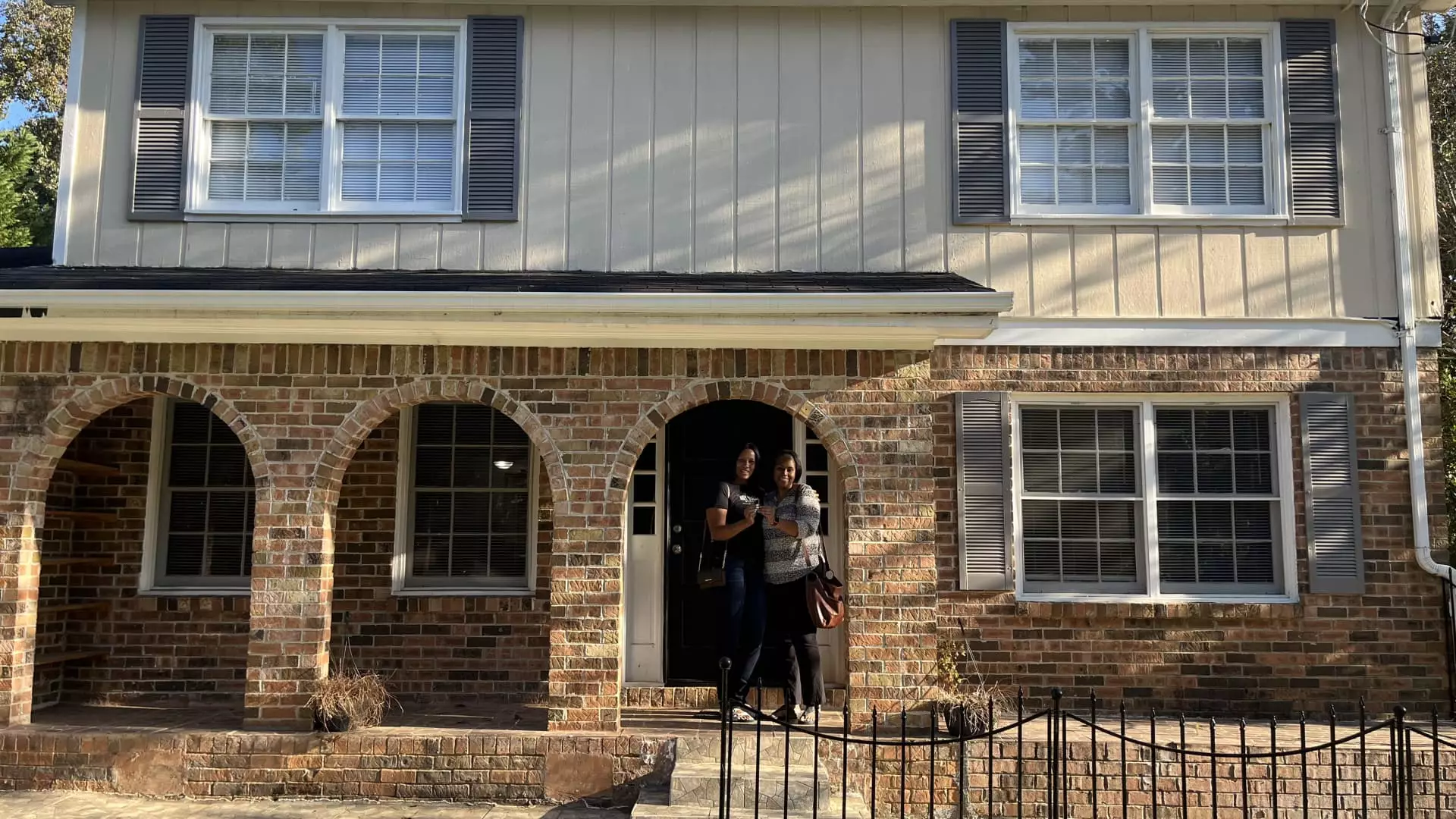In an era where the quest for affordable housing has become increasingly elusive, stories of individuals like When Will Hunnicutt epitomize the challenges many face in major urban centers such as Atlanta. Hunnicutt, a 30-year-old social worker, initially encountered the stark reality of rising rental prices and application rejections that left him feeling overwhelmed. The requirement of having a monthly income that is three and a half times the rent has become a formidable barrier, especially when market rents can exceed $3,000 in various neighborhoods. Facing such tight budgets, many prospective renters often find the options severely limited.
However, Hunnicutt’s experience took a constructive turn when he discovered Roots, a real estate investment trust (REIT) that not only provides affordable housing options but also supports tenants in building financial assets. Roots’ model presents a refreshing approach to mitigate the hurdles of transitional living, particularly for those who aspire to homeownership. For a monthly rent of $1,050 for a two-bedroom unit, Hunnicutt was able to secure a structured investment opportunity, earning passive income through his security deposit and receiving quarterly benefits for responsible tenancy. Such innovative solutions may well be the way forward for aspiring homebuyers facing today’s landscape of rising costs and stagnant wages.
For countless individuals, homeownership feels like an increasingly unattainable goal. According to data from Redfin, potential buyers now need to earn an annual income of approximately $113,520 to afford the median-priced home in the U.S., which is a staggering 35% above the average household salary. This disconnect presents a pressing concern for those aspiring to plant roots and build equity. Moreover, a significant portion of American renters—nearly 40%—indicate that the lack of sufficient savings for a down payment is a primary hurdle in their quest for homeownership.
This persistent issue highlights a critical gap that requires creative interventions and support systems. While many view the traditional home-buying experience as out of reach, various down payment assistance programs offer a glimmer of hope. However, prospective buyers must diligently research the various options available in their areas, as support varies widely among state agencies, nonprofits, and financial institutions.
Various down payment assistance options cater primarily to first-time homebuyers, often requiring qualification based on income levels or specific criteria. The burden of saving for an initial down payment, often perceived as a formidable 20% of the purchase price, can be alleviated through these programs. Notably, the average down payment for first-time buyers is more realistically closer to 8%, with some loan options permitting as little as 3.5% or even 0% upfront.
Organizations such as Alternatives Federal Credit Union in Ithaca, New York, and the Chicago Housing Authority represent potential lifelines, offering down payment support ranging between $9,000 and $20,000. Such assistance not only empowers individuals to pursue homeownership but also begins to rectify historical inequities that have marginalized certain groups, particularly among communities of color who have disproportionately faced systemic barriers.
The Importance of Education and Awareness
While financial assistance is essential, prospective homebuyers must also prioritize education as a fundamental component of the home-buying process. Many assistance programs mandate participants to enroll in homebuyer education courses that equip them with necessary knowledge on housing finance, budgeting, and the overall purchasing process. By empowering buyers with knowledge, these programs are helping to foster a more informed, engaged, and financially responsible generation of homeowners.
Yet, solutions need to reach further, as barriers persist. Nikitra Bailey from the National Fair Housing Alliance emphasizes the importance of targeting resources toward “first-generation homebuyers.” Many in this group lack the familial support typically available to those whose parents are homeowners, making it all the more crucial to create resources that specifically aid those without access to traditional networks of wealth and knowledge.
The pursuit of affordable housing and access to homeownership is a critical issue that necessitates comprehensive solutions targeting the multifaceted barriers individuals face today. Innovative programs like Roots offer a fresh approach in aiding renters to transition toward ownership while simultaneously building a financial foundation.
As the dream of homeownership becomes increasingly distant for many, communities must advocate for systemic changes that increase accessibility and equity in housing. Enhancing awareness of available financial assistance, fostering education, and promoting investment in marginalized communities will be pivotal in preventing homelessness and nurturing the prospects of future generations.
In a housing market defined by struggle, collaboration, and informed consumer advocacy will be essential in redirecting the path toward homeownership for all aspiring buyers.

